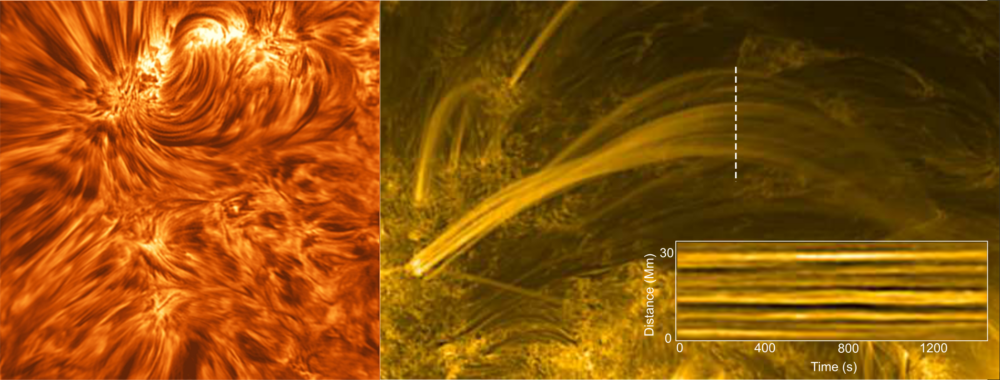This workshop will bring together an international team of leading theoretical and observational experts involved in the field of solar atmospheric magneto-seismology to generate novel ideas, models and inversion techniques to best exploit the fantastic capabilities of the “new generation” ground-based observatories, namely the 4m Daniel K. Inouye Solar Telescope (DKIST), 1.5 m Coronal Solar Magnetism Observatory (COSMO) and the 2m Indian National Large Solar Telescope (NLST). In the last decade, the solar physicists have reaped the benefits of improved space- and ground-based instrumentation, e.g. Hinode, the Solar Dynamics Observatory (SDO), Interface Region Imaging Spectrograph (IRIS), High Resolution Coronal Imager (Hi-C), Coronal Multi-Channel Polarimeter (CoMP) and CRisp Imaging SpectroPolarimeter (CRISP).
With regards to magnetohydrodynamic (MHD) wave studies, we have now identified ubiquitous MHD waves propagating through the Sun’s atmosphere, from the chromosphere up into the corona, identified their specific mode characteristics and estimated their associated energy flux. Furthermore, there have been substantial gains from magneto-seismological studies, including, estimating magnetic field strengths and determining sub-resolution cross-field and parallel plasma inhomogeneity length scales that would not be possible by other means. However, it has become increasingly apparent that plasma dynamics, e.g., flows, instabilities and condensations, occur simultaneously with these observed waves. This fundamentally questions the widespread use of static background equilibria models which have been the staple of solar atmospheric wave studies since the launch of the Transition Region and Coronal Explorer (TRACE) in 1998.
In this workshop we plan to develop innovative modelling tools to move on from these unrealistic static background models in order to prepare ourselves for the soon-to-be available ground-breaking DKIST, NLST and COSMO instruments. To put the capability of the highest spatial resolution new instrument, i.e., the 4m DKIST, into perspective, its 2-pixel diffraction-limited spatial resolution at Ca II K wavelengths will be sub-20 km, compared with the near-100 km resolution currently possible with the 0.76m Dunn Solar Telescope (DST). This means that MHD waves, which are omnipresent in the Sun’s atmosphere, have the potential to be exploited for unprecedented fine-scale and dynamic plasma diagnostics if the appropriate inversion tools are developed. Since it is expected that DKIST, NLST and COSMO will be fully operational in the next 3-5 years, it is extremely timely for theorists and observers to get together and prepare for this most promising era in solar atmospheric waves research. The superior temporal/spatial resolution and multi-wavelength imaging/spectral capabilities of this “new generation” solar observing instruments should allow us, for the first time, to perform magneto-seismological inversions that will fully take into account the highly dynamic state of the solar plasma. Hence, it is the key purpose of this workshop to put together a top international team of experts in both MHD wave modelling and observations who can work together and exchange ideas in order develop the necessary tools which will help deliver this much sought after goal.
